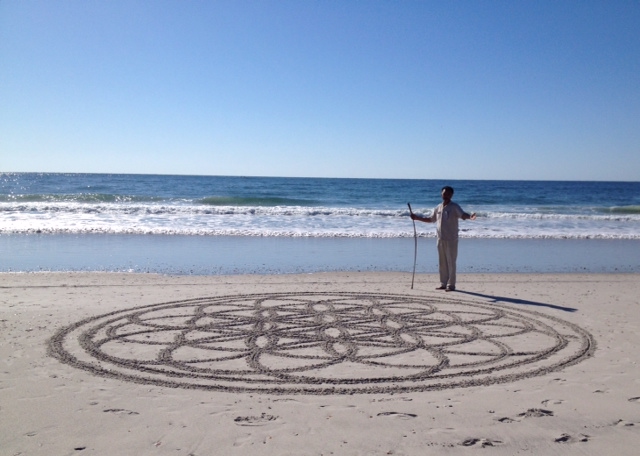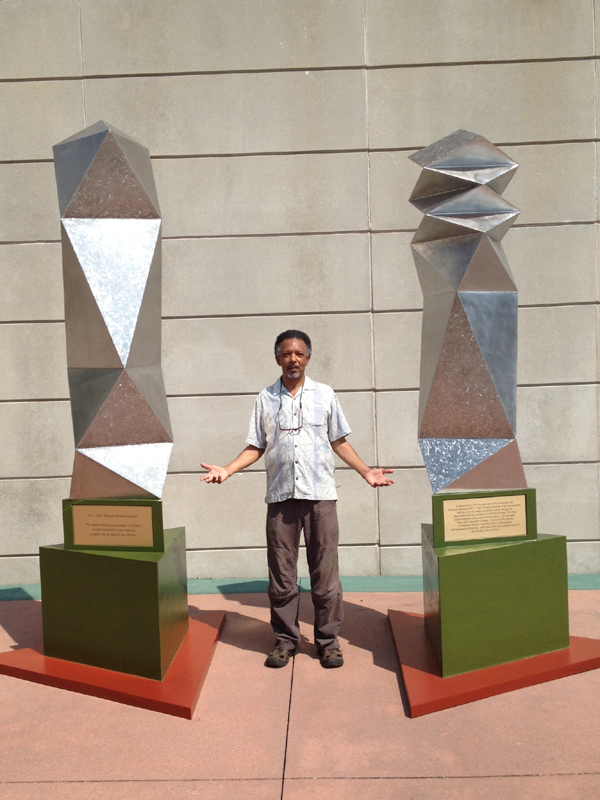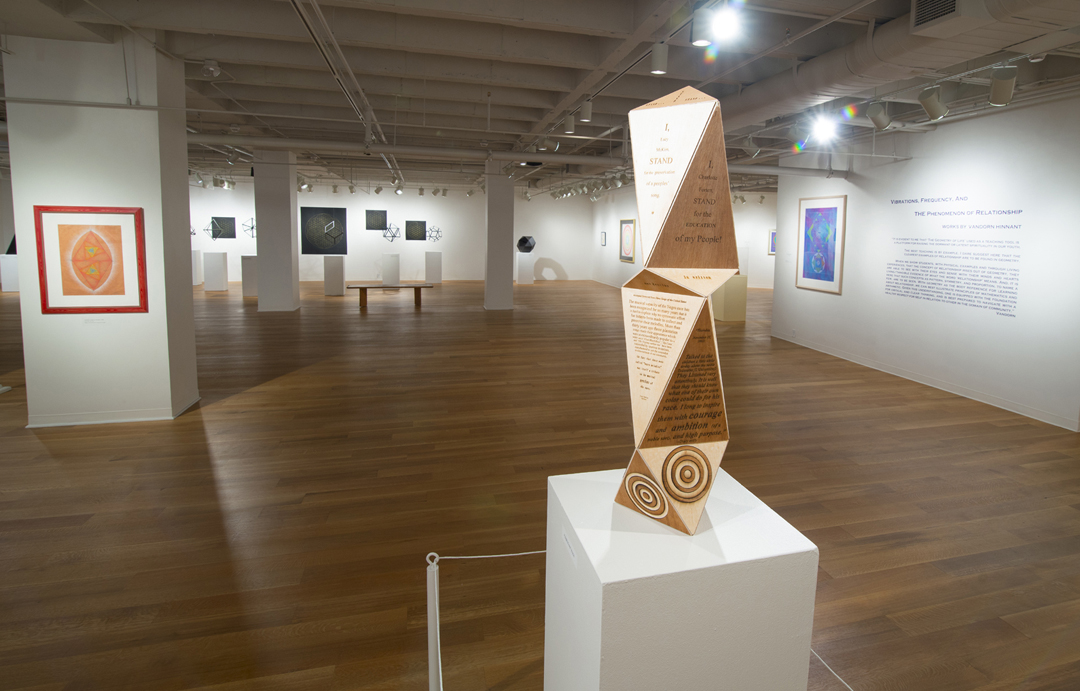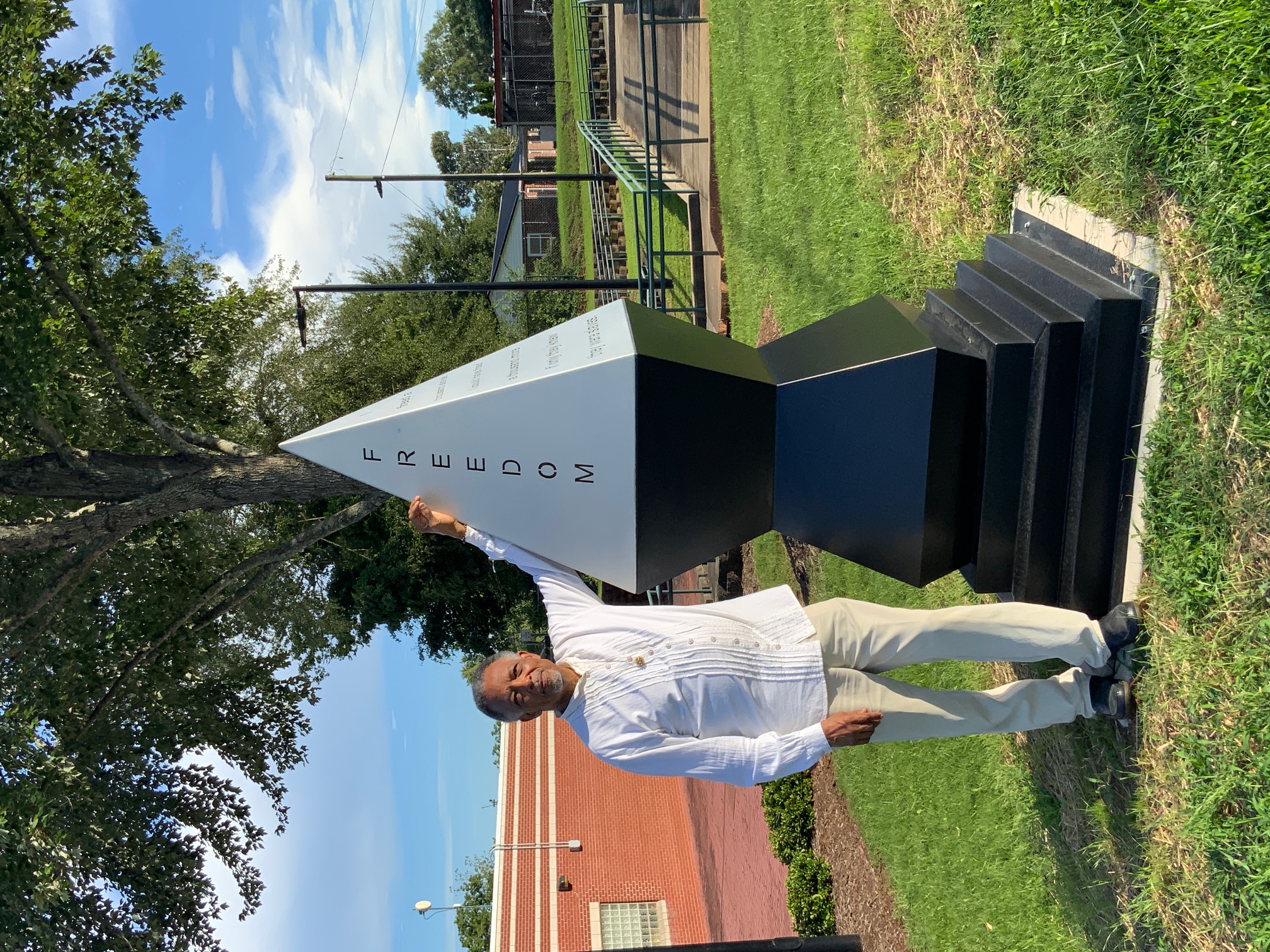An Interview with Vandorn Hinnant
By Carmen Bunche
Vandorn Hinnant, born in 1953 in Greensboro, NC, is a painter, sculptor, and poet. He earned a B.A. in Art Design from North Carolina A&T State University and studied sculpture at UNC Greensboro. His work has been shown in galleries across the U.S., featured in public art projects, and supported through numerous residencies.
On September 1st, I spoke with Vandorn, who is also my distant cousin, about his life and work.

When did you first realize you wanted to be an artist?
Vandorn described this as a “tricky proposition.” At five, he was already searching for ways to record dreams and memories. By twelve, he was painting abstractions, attempting to capture the eyes of the soul. Supported by his mother, a first-generation college student who made sure her children had access to books and art supplies, he pursued painting seriously and has never stopped.
In college, his professor Ben Burns urged him to abandon abstraction in favor of realism, but Vandorn continued on his own path. Ironically, Burns later gained recognition for abstract work. In his early twenties, Vandorn held a solo exhibition in downtown Greensboro and became immersed in what he calls “creative response,” creating in the moment without regard for who came before or beside him.

How would you describe your artistic style?
He calls his work “abstraction but not abstraction,” or metaphysical realism. His paintings and sculptures seek to capture realities not always accessible to others. In the mid-1980s he began hearing music that did not exist in the physical world, and his art became a way of visually recording those sounds. Though he began with painting, he eventually transitioned into sculpture to pursue this dimensionality more fully.

What legacy do you hope to leave?
He hopes his body of work—spanning early visions, midlife explorations, and current studies—will open others to new ways of perceiving reality.

Advice for artists:
“Have enough courage to ask, and don’t be afraid to hear no.”
Speaking with Vandorn was not only beneficial in learning about his creative process and the steps that shaped his journey, but it was also a meaningful opportunity to connect with an artist who is part of my family.
